Bavaria is a region located in southern Germany and at the heart of Europe. It stretches from the Austrian border into central Germany and is home to the famous cities of Nuremberg and Munich. From Bavaria you can travel by train as far east as Moscow and a high-speed service provides a direct connection to Paris. Yet this region is much more than an excellent place to stop over during a trip to Europe.
Nowhere else do people dress like the Bavarians, drink beer like the Bavarians, or build castles like the Bavarians. They have created a unique and fascinating culture, but one which can at first appear a little mystifying. These seven tips will help you enjoy your visit, save money and also gain the acceptance of the locals – something that money can’t buy.
1. Beer
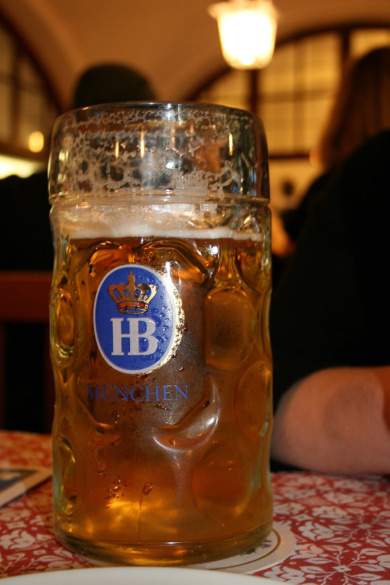
Beer is bound to be the first thing that comes to mind when you think of Bavaria. For the locals, beer is more than just a beverage, it’s something you need to live, like bread or sunlight! I’m told drinking four (half litre) beers is as nourishing as eating a pork schnitzel.
[social]
There are two types of beer you need to know about: a Helles (pale wheat beer) and a Dunkels (dark wheat beer). If you like more of a typical wheat beer, then go for the Helles – but if you prefer a richer, more “hoppy” flavour yours is a Dunkels.
When you’re deciding where to go for a beer, steer clear of highly-polished and new-looking beer halls with their fake grass and plastic cows. These places tend to be tourist traps and the beer and service are likely to be below par. The last time I went to one of them the server tried to overcharge us for our half-full tankers of mediocre beer.
You are much more likely to have an authentic (and tasty) beer-drinking experience if you look out for smaller, less glossy-looking places and particularly ancient buildings with murals painted on them. Take sightings of rotund, moustachioed men drinking beer inside to be a good sign!
>> Read about attending Oktoberfest on a budget
2. Lederhosen & Dirndl
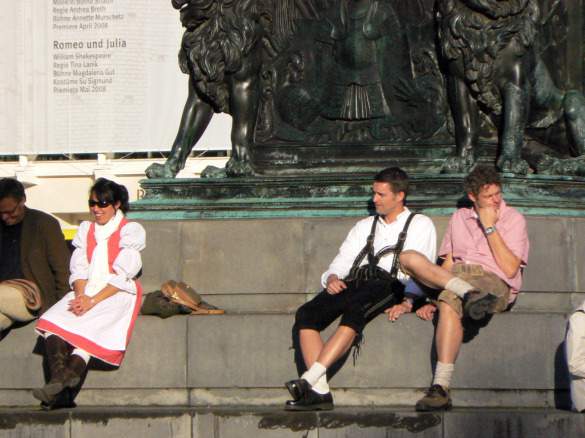
Traditional Bavarian dress consists of Lederhosen – literally leather trousers – for men and the Dirndl – a combination of blouse, tight-fitting bodice, skirt and apron – for women. They are both worn by Bavarians as formal dress, a kind of Sunday best. Don’t be surprised to see fully kitted-out folks getting on and off the subway in Munich.
Oktoberfest is undoubtedly the time when you’re most likely to see lederhosen and dirndls out and about, and wearing them is in fact actively encouraged. If you want to blend in with the locals and take the same pride in your attire as they do, then you can buy your own and wear it to a fair or beer festival. It will always come in handy as a pretty stylish fancy dress costume when you get back home.
C&A, or say und are to the Germans, is probably the best place to find a reasonably-priced but perfectly respectable pair of Lederhosen or a Dirndl. Here you pay around 100€ for something that could set you back as much as 200-300€ in a more “traditional” store. Look out for second hand shops too, they’re popular in Germany and are helpfully also known as “second hand shops.”
3. Climb Every Mountain
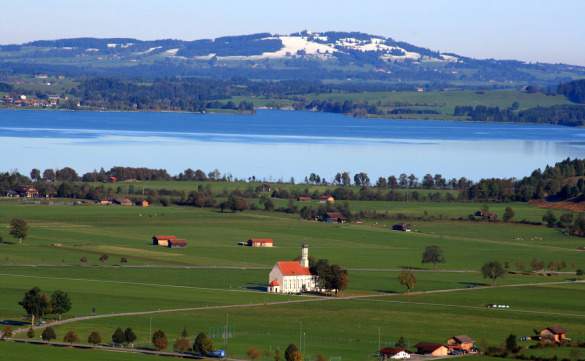
When the Bavarians say early, they mean early – we’re talking up and ready to go by 6.30 in the morning. If you don’t want to be “another one of those tourists from Munich,” you’re going to have to become an early riser, too. Having made the effort to get up at an unearthly hour, you can make it all worthwhile by climbing up a big hill before breakfast!
The Alpine region in the south and Franconian Switzerland, a national park area not far from Nuremberg, are where you are most likely to find the peaks tackled by Bavarian hikers who will assume that you’re a local and greet you with a friendly “Servus” or “Grussgott,” which you should return. Walking routes tend to be clearly signposted and will tell you how far you have to go to reach a particular point on the map that the nice lady at the tourist information office gave you, as well as how many metres high a particular incline is.
What could be better and more typically Bavarian than to celebrate your exertions by sitting down to some white sausage (Weisswurst) with a little sweet mustard when you’re done? You might be lucky enough to find a restaurant at the top of the mountain you’ve just climbed, as I did when I hiked Blomberg near to the southern Bavarian town of Bad Tölz, or you might have to wait until you’ve found your way back down through the pine trees.
>> Discover six iconic mountains you can climb
4. Much More to See Besides Munich
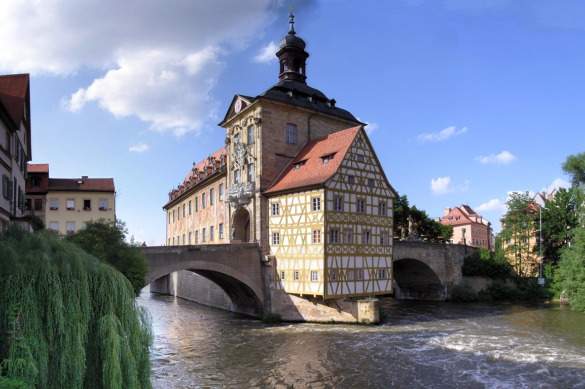
Many visitors don’t stray beyond Munich and its environs, but, as fascinating as it undoubtedly is, there is so much more to see than the region’s capital. What’s more, there is so much diversity within Bavaria in terms of culture, food, architecture and the local mindset. The German language itself varies so much throughout the region that it can prove difficult for a southern Bavarian to understand someone from the north.
Following the so-called Romantic Road, a picturesque sightseeing route, from Munich will take you into Schwabia, where you’ll find the culture-rich city of Augsburg and you can eat Maultaschen and Spätzle, two delicious savoury specialities. Franconia, or Franken, is home to a wealth of history, from the UNESCO-listed town of Bamberg to the Nazi Party Rally Grounds in Nuremberg. While Oberbayern, the deep south of Bavaria, is the most traditional part of the region, where ancient crafts such as wood carving and violin-making still flourish and where the world-famous passion play is performed in Oberammergau once every decade.
5. The Bayern Ticket
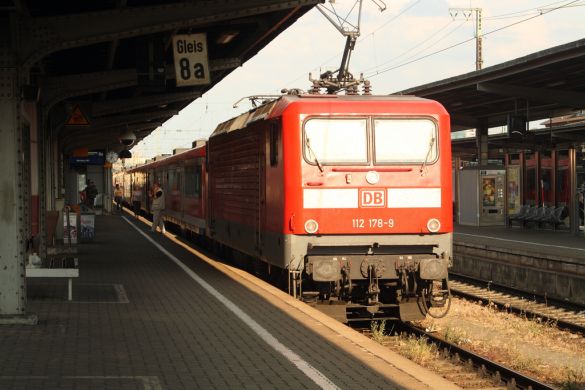
Many visitors to Bavaria aren’t aware of the existence of something called a Bayern Ticket – Bayern being the German term for Bavaria – but if you plan to travel around the region by train, it could prove to be your favourite travel companion.
The deal is this: you can travel anywhere in Bavaria between 9am and 3am the following day on any of the local RE or RB trains, which may not be as fast as the high-speed inter-city expresses but are less likely to be delayed – yes, German trains are sometimes delayed, believe it or not!
A Bayern Ticket Single for one person will set you back 20€ from a ticket machine, and slightly more if you buy it from the ticket office. You can also get a Bayern Ticket for up to 5 people for 28€ making it an even better value for money. Even if you’re travelling alone you might find yourself approached at the train station by people who want to share their Bayern Ticket with you or would like to share yours, and this is all perfectly legitimate.
One of the best features of the Bayern Ticket is that you can also use it on most local transport networks once you reach your destination, which means that for no extra cost you can travel on the subway in Munich, take the bus from Oberammergau to King Ludwig’s Linderhof Palace, or tram your way around Nuremberg.
>> Learn about Germany rail passes
6. Free Art
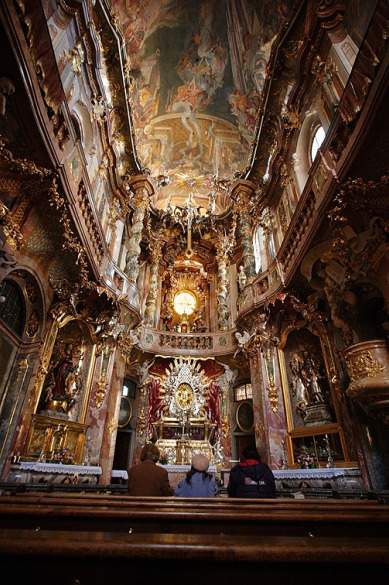
If you’re an art lover there are a number of world-class art museums in Bavaria, the most high-profile of which are probably the Old, New and Modern Pinakotheks in Munich – but it’s worth remembering that you can also experience stunning art and architectural highlights for free by dipping into a church. I can’t count the times I’ve pushed open the heavy wooden door of a Bavarian church, which looked pretty standard from the outside, to find myself amazed by the stunning frescoes, wood carvings, and gilded decoration I found inside.
Do not be afraid to enter any church you come across – as long as it’s open it’s all right to go inside. Often churches prove to be treasure troves of local history as well as being pretty to look at. One of the most impressive churches that you can visit for free in Bavaria has to be the so-called Asamkirche on Sendlinger Strasse in Munich, which takes its name from the Asam brothers who designed and built it. Easy to miss because of how unremarkable it looks from the outside, peek inside and you will discover a breath-taking Baroque masterpiece.
7. Fest-tacular

During the summer months many Bavarian towns hold a weekend-long festival, or fest, where there is live music, free-flowing beer, and all the sausage you can stomach. The music is often pretty good, but the atmosphere is what really makes these events so enjoyable.
Anybody who’s anybody will be out celebrating and they’re perfectly happy to welcome visitors who want to come along for the ride. Personally, I’ll never forget the time I arrived in Regensburg after a long bike ride to unexpectedly find the streets of this small, medieval town so full of revellers that I could hardly manoeuvre my bicycle through the melee to get the schnitzel burger I so badly needed after all that fresh air! Later on, I got up to dance and sing along as a very good bootleg Beatles band in full Sergeant Pepper get-up belted out the hits.
You can find out about events like this in advance by going to the website of a town you’re interested in visiting, which is almost always available in English too.
All you have to do now is starting planning that Bavaria trip!
Look for cheap flights to Munich, find Munich hotels or learn more about Germany travel:
- Germany by the Glass: Three Drinking Destinations Not to Miss
- Best Selling Beers Around the World
- Six Places in Europe You Never Thought to Go Wine Tasting
photos, top to bottom, by: paul-simpson.org, curran.kelleher, Alaskan Dude, Qole Pejorian, Matthew Black, muddyclay, Allie_Caulfield